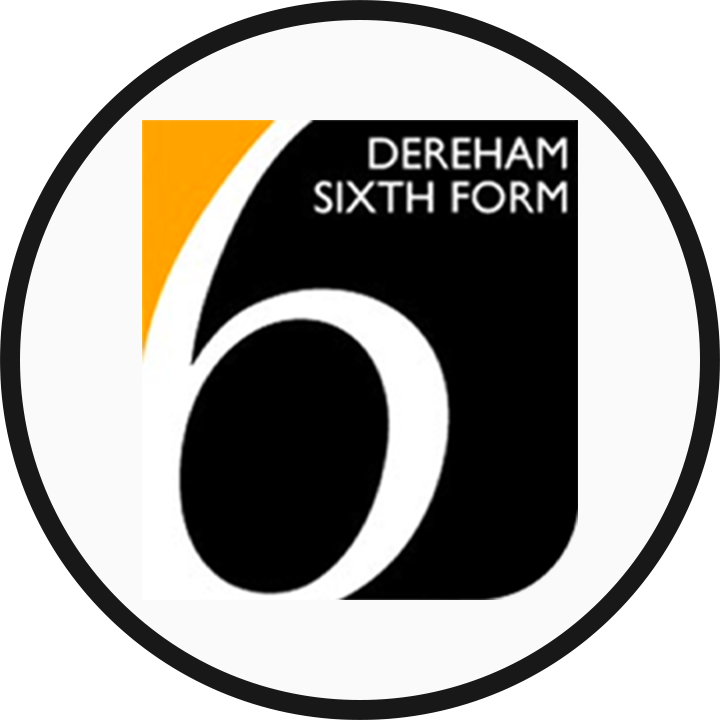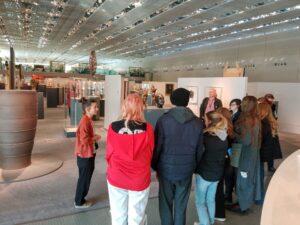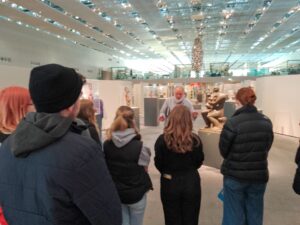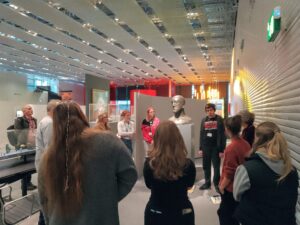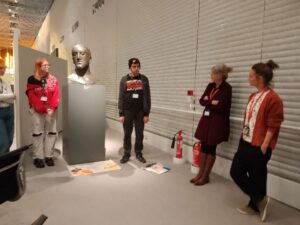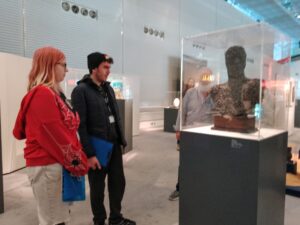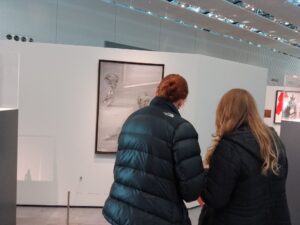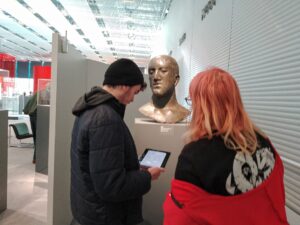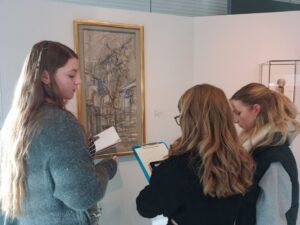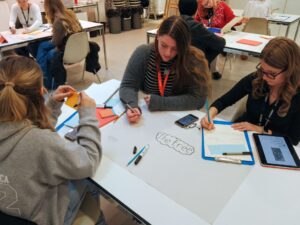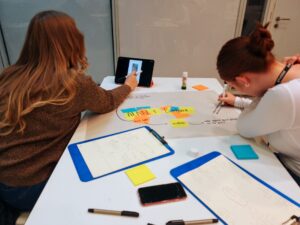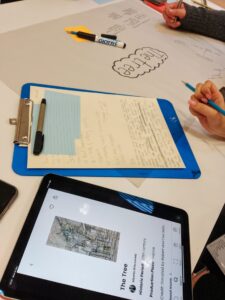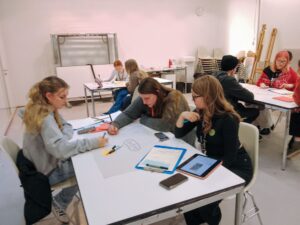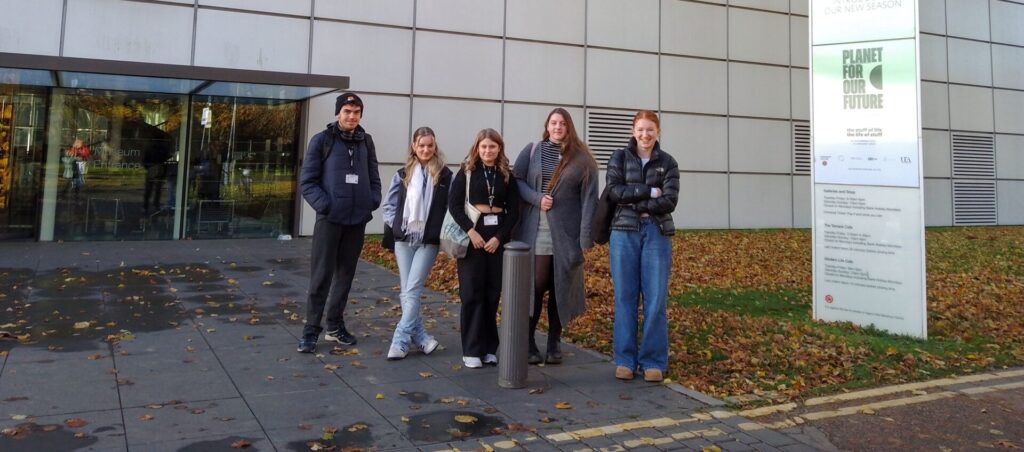
Last week, seven students from our art and design courses went to The Sainsbury Centre for an Articulation Discovery Day. This is the National Gallery’s nationwide public speaking initiative for young people:
“Articulation Discovery Days are free workshops for KS5 students to help develop their critical analysis, research and public speaking skills. … During this one-day workshop students will:
- Explore art works through personal observation, discussion and primary research
- Be encouraged to think independently, analyse information, and ask informed questions
- Learn how to conquer nerves, physically prepare, and successfully deliver a presentation to large audiences
- Meet with and interview art world professionals
At the end of the day each student will deliver their research and personal responses in short group presentations to the workshop leaders and their fellow students. Students do not need any prior experience, all skills required will be introduced on the day.” (National Gallery, 2022)
The Articulation Discovery Day is a pre-curser to students having the opportunity to enter the Articulation Programme and Prize. The Programme consists of an online mentoring session to support students who are thinking of participating in the Prize. The Prize itself follows on from the skills developed during the Discovery Day and gives students the opportunity to “deliver a 10-minute presentation to an audience about a work of art, architecture or an artefact in a museum or gallery setting. … Adjudicators then asses each presentation as a whole, looking at content, structure, delivery and the speaker’s original approach and unique potential.” (National Gallery, 2022). Last year, two of our students made it through to the Regional Heats – you can read their experience here.
Here’s what our students this year thought of their experience:
I really enjoyed it. It was great fun and the people were lovely (and funny). The art was also really interesting with a wide variety of artefacts and a couple of exhibitions that were also interesting. (Lillian)
I decided to go to the Articulation Discovery Day to get out of my comfort zone. In doing so, I was surprised that I actually enjoyed talking about the piece I had chosen. I am more confident in my interpretations of art as well as voicing them. It was a really insightful and beneficial trip. (Jessie)
The Gallery itself was interesting. I felt motivated to explore and the artworks they had in their collection were extremely impressive. I found myself engrossed in different pieces several times. The activities were very enjoyable and also valuable. It definitely helped boost my confidence. The way they built up to more and more nerve-wracking interactions slowly was very effective! The attitude of the staff was comforting and uplifting. Overall, I had a fantastic time. (Kallum)
I thought this trip was a great experience for everyone, but especially for people who do not enjoy public speaking. Throughout the workshop I was slowly made to feel more and more relaxed, helping me to open up and speak with confidence. Although this trip is directed towards art, it’s a really good workshop to help with public speaking. As an art student, it was very interesting to research one specific piece of art, especially of our choice, but it wasn’t just focused on facts and research. It was very much open to our interpretation of the piece of art. This allowed us to think outside of the information, and even the title of the piece of art, and understand what we take away from it. (Millie)
Our Art and Design staff were very impressed with our students’ engagement with the experience:
They were very honest about how anxious they were feeling about the prospect of giving a presentation, but Ian Brownlie led workshops to build their confidence, and at the end of the day they each gave wonderfully insightful interpretations of these works in the main gallery, all of which have heavy subject matter.
Our attention was drawn to the face of Degas’ “Little Dancer, aged 14”, and we were asked to consider her strength and her vulnerability. We questioned whether Degas was complicit in the exploitation of young dancers at the Opera, or if he was critiquing this.
The students presenting Giacometti’s “The Tree” speculated that the stormy scene with subdued palette and charged brushstrokes related specifically to the experience of war.
We studied the surface marks of Frink’s “Tribute” and deduced that these were more than imperfections of the artist’s technique, and were likely representative of the physical and emotional scars from battle.
With Rawthorne’s “Alun & Barabara” a misreading of the subtitle “Double Portrait with Window” opened up a discussion about the importance of titles, and we wondered whether the students saw ‘widow’ not ‘window’ as this is what the image conveys.
We were really struck with the students’ empathy for the work, and look forward to supporting them to deepen their research and give longer solo presentations later in the year should they wish.
Please click on any image below to enlarge:
